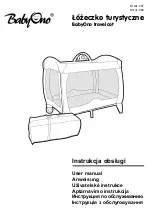
Product description
42
© SICK AG · Germany · All rights reserved · Subject to change without notice
8013889/ZML0/2017-06-09
Operating Instructions
NAV350 Laser positioning sensor
Chapter
3
•
for measuring new reflectors after initial installation.
•
for correcting position changes on the reflectors.
•
if only low positioning accuracy is required in the layer/in the system.
•
if quick setup is required, e.g. at trade shows and exhibitions.
Division of the route into layers
The reflector data saved in the NAV350 can be allocated to up to 320 layers in groups. Each
layer represents a fixed defined area in the AGV’s overall route through which the AGV pass-
es. By switching over to the related layer, the NAV350 always only uses for detection the
reflector data for the related area through which the vehicle is passing. The switching over
between the layers is undertaken by the vehicle computer depending on the location.
Division into layers is used to …
•
keep the NAV350 downward compatible with the NAV200.
•
configure a large route more clearly.
A layer must be setup such that the NAV350 can detect as many reflectors as possible in
this layer, but as few reflectors as possible in other layers.
Fig. 25:
Common usage of the reflectors from two neighbouring layers
Ideally the transitions between the layers are to be checked such that they take place on
straight
sections of the route. The required switch over by the NAV350 from the reflector
data saved for one layer to the data for the neighbouring layer by the vehicle computer
should take place in the middle of a section around 1 m (3.28 ft) long.
Recommendation
One and the same reflector can be allocated to two different layers. Layers can therefore
overlap, a feature that is recommended for a smooth AGV transition between two layers.
Layer 1
Layer 2
Switch over points
1 m (3.28 ft)
















































